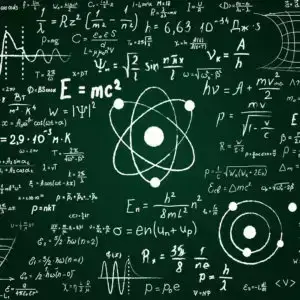I’ve seen a few articles about neutrinos recently, high energy ones, super fast ones, ones from open space, others from “sources”, and my understanding of the particle is that it’s very hard to detect, passes through light-years of lead without interaction, etc. don’t headings and speed require multiple readings to make? How do we know the velocity of a neutrino when we can only detect them at single points?
The deep sea detector in the news uses Cherenkov radiation to detect the neutrino.
A neutrino can interact with the nuclei in water molecules (so hydrogen and oxygen nuclei) and produce a charged particle like an electron or a muon. The outgoing particles carry the energy of the incident neutrino, so they can be emitted at a speed greater than the speed of light in the liquid medium.
Note this is much less than the speed of light in a vacuum, so this isn’t breaking any physics. When charged particles (electrons, muons) pass through a medium at speeds greater than light in that medium, they emit Cherenkov light in a forward cone.
The Cherenkov light is analogous to the shockwave formed when breaking the sound barrier. Since it points in the direction the particle was traveling, you can detect the shape of the light cone with a large array of photon detectors and reconstruct the direction of the neutrino.
I don’t know for sure but I assume it’s similar to ballistic analysis; you can get a good idea of the origin point based on all the detected interactions the ‘projectile’ had with surrounding matter.
I was just reading the Ars article about the new seafloor detector and comments on that. From that, it sounds like there’s a cascade of the neutrino decaying into other particles and emitting light/radiation as it goes, so I would assume that gives you a vector and I wonder if different stages emit different wavelengths. Glad to be corrected though!
Trouble with that is that the chance of a neutrino having more than one interaction in a detector are almost 0. And there could be detections from all kinds of directions.
Look what I just found in my go-to-sleep playlist: PBS Space Time: How to detect a Neutrino
Just like the first smash when you’re playing pool, quite a few balls are going down the table while a couple might go off up the table. There’s a net movement down the table. It gets more complicated because we’re talking balls of different masses and a bit of relativistic speeds, but analysis will reveal what those masses are and hence the net direction of the momentum and thus the direction of the velocity.
If I understand it correctly we detect them when they let an atomic nucleus decay in some transparent material like water or ice. The decay produces an electron and a positron which annihilate to a photon. Because momentum is conserved that photon continues traveling in the same direction as the neutrino. And with the same speed which is close to C and usually faster than the speed of light in water, which releases Cherenkov radiation, basically a sonic boom but with light.
Somebody please correct me if I got something wrong.
In the case of velocity, all neutrinos move at essentially the speed of light (they have the slightest amount of mass which slows them down, each of the three types of neutrino a different mass compared to the other two but still very, very, extremely low masses). Only neutrinos less than 2 eV are noticeably slower than light, and that’s quite a low energy. The almost-exactly-light-speed has been confirmed by, among other methods, comparing bursts of neutrinos from supernovas and other intense sources to the photons coming from the same sources.
The photons move at the speed of light by definition and MeV and GeV energy neutrinos show up in detectors at the exact same time down to as close as we’ve been able to measure it (roughly one part in a billion, I think it is).
There are two detectors, on opposite sides of the earth. Neutrino hits one, than the other.




